Here's How To Add Cheese To Your Scrambled Eggs Like A Chef
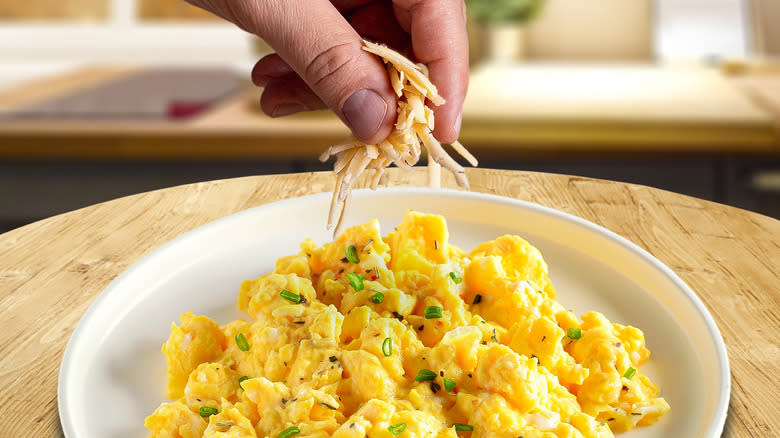
Scrambled eggs straight from the skillet are an American breakfast classic. Whether you like your eggs for breakfast with a side of hash browns, or you prefer to jazz them up by serving them atop a rich slice of avocado toast or folded into a breakfast burrito, chances are those eggs will be even more tasty with melty cheese. But how you add cheese to eggs actually matters a lot if you want to get that creamy, cheese-pull texture that practically makes the eggs and cheese an indistinguishable delicious bite.
We spoke to Nelson Serrano-Bahri, Chef and Director of Innovation at the American Egg Board, to get some insider tips and tricks for achieving the perfect cheesy eggs, no matter what type of cheese you want to add, from hard to soft. American cheese is practically designed to melt, while other cheeses ranging from cheddar to hard grating cheeses need a little more technique. Serrano-Bahri shared some pointers with us to guarantee success.
Read more: The 20 Best Olive Oils For Cooking
American Cheese Is So Easy To Melt
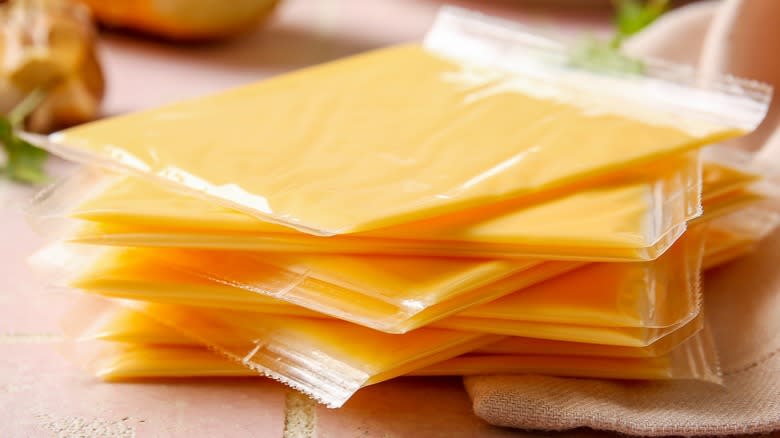
American cheese is one of the most easy and flavorful additions to a batch of scrambled eggs. In the same way that it adds texture and flavor to a batch of mac and cheese, the individual slices are just the right amount of cheesy, salty flavor enhancement. Nelson Serrano-Bahri recommends tearing the slices into smaller sections so they can melt more quickly and mix throughout the eggs. He recommends adding the cheese a minute or two before the eggs are finished, so it doesn't burn but still gets fully melted.
Serrano-Bahri's other suggestion for American cheese is to drape a slice across your finished scramble and pop the skillet under the broiler. You'll wind up with a crispy cheese crust that contrasts beautifully with the soft egg texture. Do remember that American cheese can be rather salty, so go lighter on added salt until you've tasted the eggs. A few grinds of fresh pepper will add a bright finish.
Sometimes Cheddar Is Better
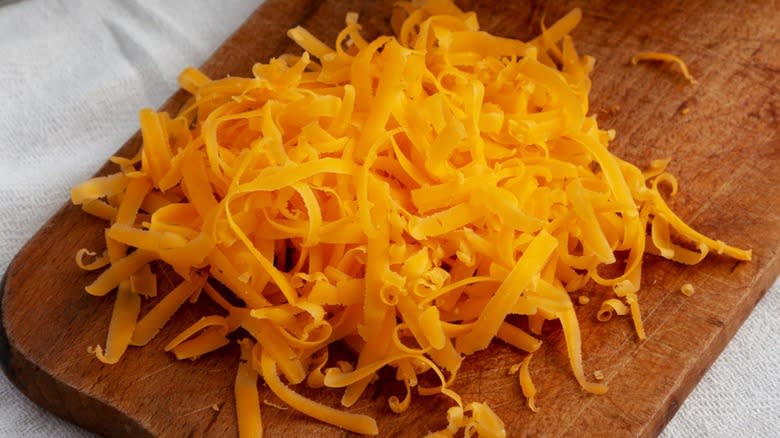
Nelson Serrano-Bahri is a fan of adding aged cheddar to scrambled eggs. He told us "it melts well and creates a beautifully cohesive dish without overpowering the eggs." Aging affects the flavor of sharp cheddar cheese by converting some of the sweet, milky tastes to deeper, toasty, umami-rich tones. This means that, as it mixes with the eggs, the two create a well-rounded flavor profile. The extra moisture in the egg also helps ensure a smooth texture for the end result, since aged cheddars can be a bit dry.
The best way to incorporate cheddar, according to Serrano-Bahri, is to finely grate a block of the cheese. That way, there's an even distribution in the eggs, and the evenly-sized shreds all melt consistently. For the same reasons we avoid using pre-grated cheese on pastas, we recommend using freshly grated cheese for your eggs to ensure a better melt and fresher flavor. Serrano-Bahri prefers to add cheddar cheese halfway through the cooking process so there's enough time for a slow melt.
Incorporating Hard Grating Cheeses Is A Bit Different
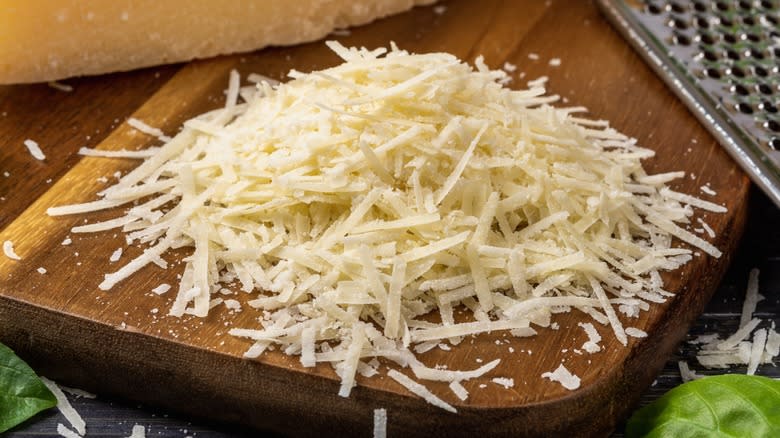
Savory Parmesan, Pecorino Romano, and other dry grating cheeses also add a wealth of flavor to scrambled eggs, but they require a slightly different method for the best result. Since these cheeses are so dry, their oil can separate out when they're overheated, notes Nelson Serrano-Bahri. Adding cheeses in this category should be done at the end of the cooking time to avoid pools of oil or rubbery shreds of cheese in your otherwise perfectly-cooked eggs.
Hard grating cheeses bring a concentrated burst of salt and flavor to all the dishes you add them to, so do be careful about seasoning eggs when you want to add Parmesan-style cheese. The nutty, umami tastes could completely overwhelm the delicate egg flavor if too much is added. In the spirit of cacio e pepe-style pasta, plenty of freshly ground black pepper would turn a plate of Pecorino-lashed eggs into a breakfast with classic Roman flavors.
Soft Cheeses Pair Well With A Scramble, Too
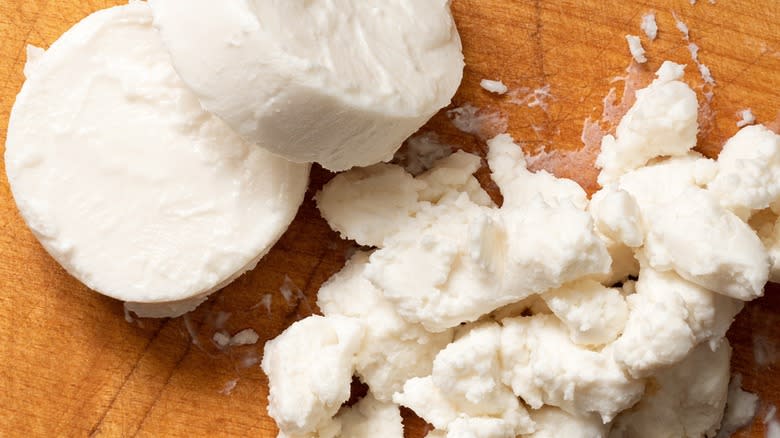
Nelson Serrano-Bahri is also a fan of folding soft cheese, such as goat cheese, into scrambled eggs, but he recommends only adding them after you've taken the skillet off the heat. Very soft, high moisture cheeses can melt too quickly, turning into a disappointing puddle around your eggs. In particular, Serrano-Bahri enjoys folding full-fat cottage cheese into eggs. He says that the curds make "a delightful contrast to the soft eggs by adding a subtle tanginess."
The slight acidity of cottage cheese gives it a full-flavored, cultured dairy cream flavor similar to crème fraîche, which we already know from Gordon Ramsay is delicious folded into eggs. There are dozens of options when it comes to soft cheeses for your eggs, so you'll want to consider the taste of the cheese and its salt level when adding one of them to your skillet. From herby Boursin to mild-mannered ricotta or ripe Camembert, folding in a soft cheese can elevate your egg dish with a simple turn of the wrist, no grating needed!
Read the original article on Tasting Table.

